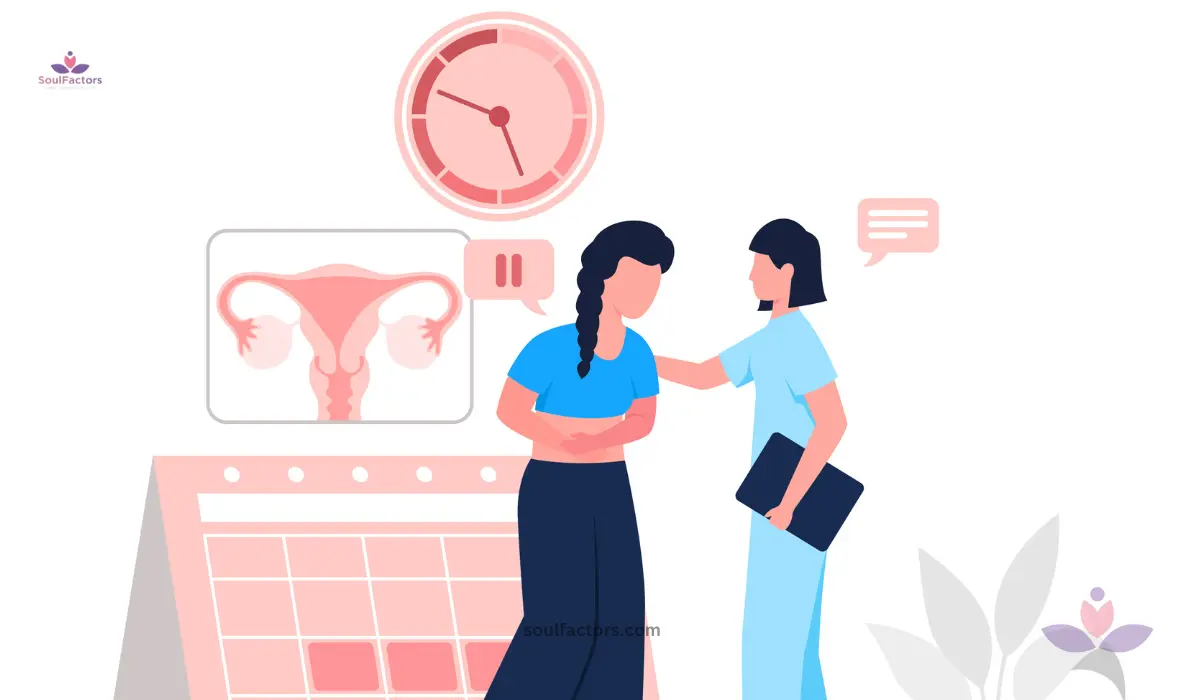Understanding the 4 Signs Ovulation Is Over – What To Look For?
Understanding the signs ovulation is over is a valuable tool for anyone looking to track their menstrual cycle or plan for pregnancy. Pay attention to this article and track your fertility journey and reproductive health.
On Mar 20, 2024 – 5 minutes read

Understanding the signs that ovulation is over can be a valuable tool for anyone trying to conceive or simply wanting to be more in tune with their menstrual cycle. Ovulation is the process where an egg gets released from one’s ovary. It is a crucial part of the reproductive process. Knowing when ovulation has ended can help you plan your fertility journey, determine when to expect your next period, or use natural family planning methods more effectively.
In this article, we’ll dive into the various signs that indicate ovulation is over, including changes in cervical mucus, shifts in cervical position, and the presence of ovulation pain. We’ll also discuss how tracking your basal body temperature can provide additional insight into your ovulation patterns. By the end of this article, you’ll have a better understanding of what to look for and how to interpret these signs in the context of your own body. Whether you’re actively trying to conceive or simply curious about your reproductive health, learning to recognize when ovulation is over can be an empowering step in your journey.
Signs Ovulation Is Over
Now, let’s take a look at some of the signs ovulation is over one can look forward to tracking their periods

1. Mucus Changes
One of the most noticeable signs ovulation is over is a change in cervical mucus. During ovulation, cervical mucus typically becomes clear, stretchy, and slippery, resembling raw egg whites. This type of mucus is designed to help sperm travel more easily through the cervix and into the uterus.
However, once ovulation is over, the mucus changes. It becomes thicker, cloudier, and less abundant. This change in consistency is one of the clearest signs that ovulation has ended
2. Changes in Cervical Position
Another sign ovulation is over is a change in the position of the cervix. During ovulation, the cervix tends to be soft, high, open, and wet. This position allows for easier sperm entry. After ovulation, the cervix returns to a lower, closed, and firm position.
It may also feel drier than it did during ovulation. These changes in cervical position can be detected by gently inserting a clean finger into the vagina and feeling for the cervix.
3. Ovulation Pain
Some women experience ovulation pain. It is also known as mittelschmerz. This pain occurs on one side of the lower abdomen and is caused by the release of an egg from the ovary. Ovulation pain is usually a dull, cramping sensation that lasts for a few minutes to a few hours. While not all women experience ovulation pain, for those who do, it can be a reliable sign that ovulation is over.
4. Body Temperature
In addition to these physical signs, tracking your basal body temperature (BBT) can also help you determine when ovulation is over. BBT is your body’s temperature at rest, typically measured first thing in the morning before getting out of bed.
During ovulation, your BBT may increase slightly (about 0.5 to 1 degree Fahrenheit) due to the hormone progesterone. This temperature shift usually occurs a day or two after ovulation and remains elevated until your next period begins. By charting your BBT daily, you can identify the pattern and pinpoint when ovulation has likely ended.
Why Should One Pay Attention To The Signs Ovulation Is Over?
It’s important to note that every woman’s body is unique, and the signs ovulation is over may vary from person to person. Some women may experience all of these signs. However, some others will only notice one or two of the ovulation symptoms mentioned in this article. Additionally, certain factors like stress, illness, or hormonal imbalances can affect ovulation and make it more difficult to detect.
If you’re trying to conceive, knowing the signs ovulation is over can help you time intercourse more effectively. Experts recommend having sex regularly (every 1-2 days) during your fertile window. This typically includes the five days leading up to ovulation and the day of ovulation itself. Once ovulation is over, your chances of conceiving decrease significantly.
On the other hand, if you’re using natural family planning methods to avoid pregnancy, recognizing the signs ovulation is over can help you determine when it’s safe to have unprotected sex. Keep in mind that the sperm can survive for five days in the female reproductive tract. So it’s essential to continue using protection or abstaining from sex for several days after ovulation to reduce the risk of pregnancy.
Conclusion
Understanding the signs ovulation is over is a valuable tool for anyone looking to track their menstrual cycle or plan for pregnancy. By paying attention to changes in cervical mucus, cervical position, and the presence of ovulation pain, you can gain a better understanding of your body’s natural rhythms. Charting your basal body temperature can also provide additional insight into when ovulation has ended and when your next period is likely to begin.
It’s important to remember that every woman’s experience is unique, and it may take some time and practice to become familiar with your own ovulation signs. Some women may find it helpful to keep a journal or use a tracking app to record their observations and identify patterns over time. Others may benefit from working with a healthcare provider or fertility specialist to develop a personalized approach to monitoring their ovulation.
If you have any concerns or questions about your menstrual cycle or fertility, don’t hesitate to reach out to your healthcare provider for guidance. They can offer personalized advice and support based on your individual needs and goals.
Now that you know the signs to look for, do you feel more confident in identifying when ovulation is over in your own body?

Subscribe to Newsletter
Elevate your routine, stay on trend, and embrace a personalized beauty journey with our curated insights.





Write a Comment